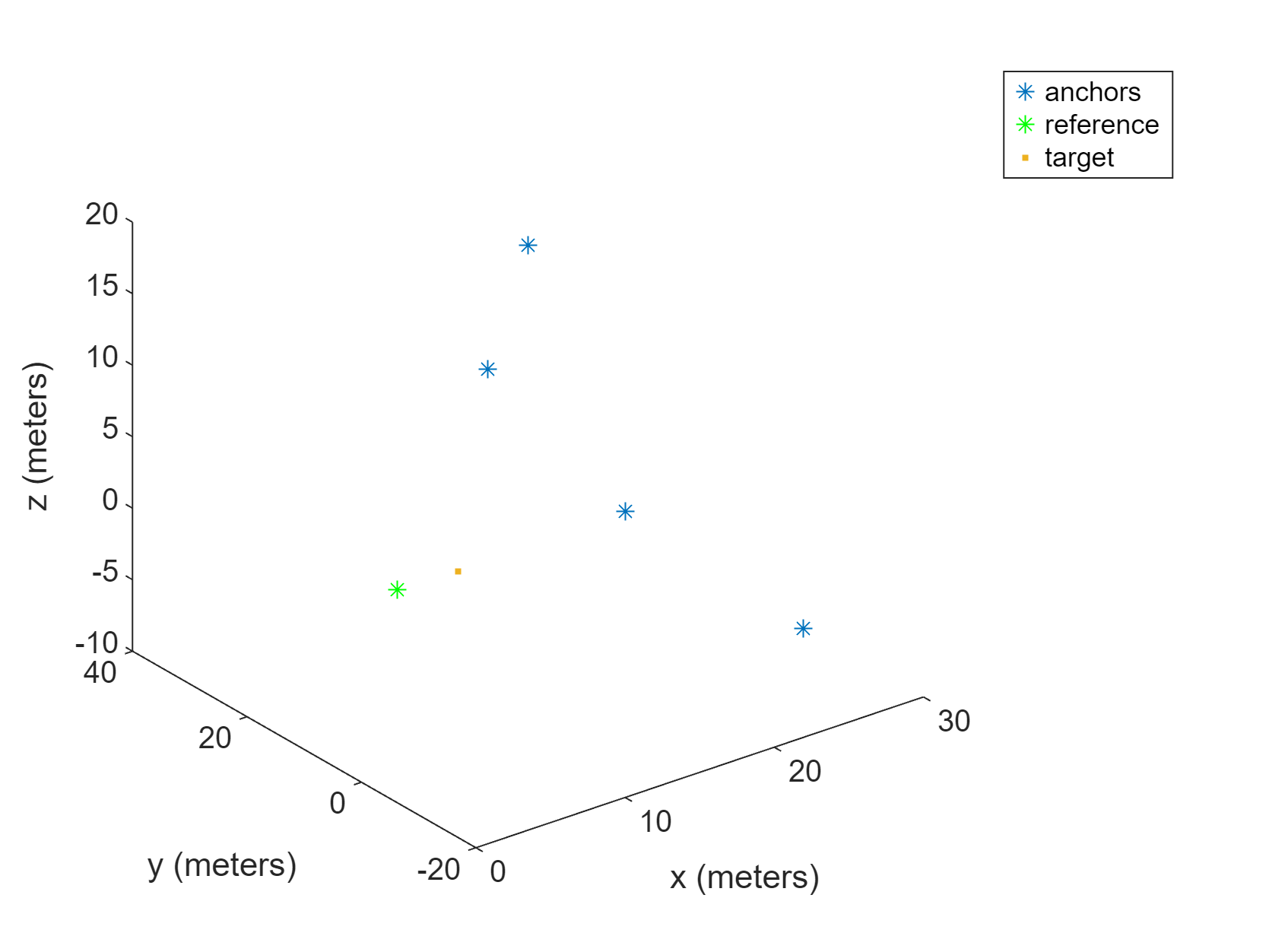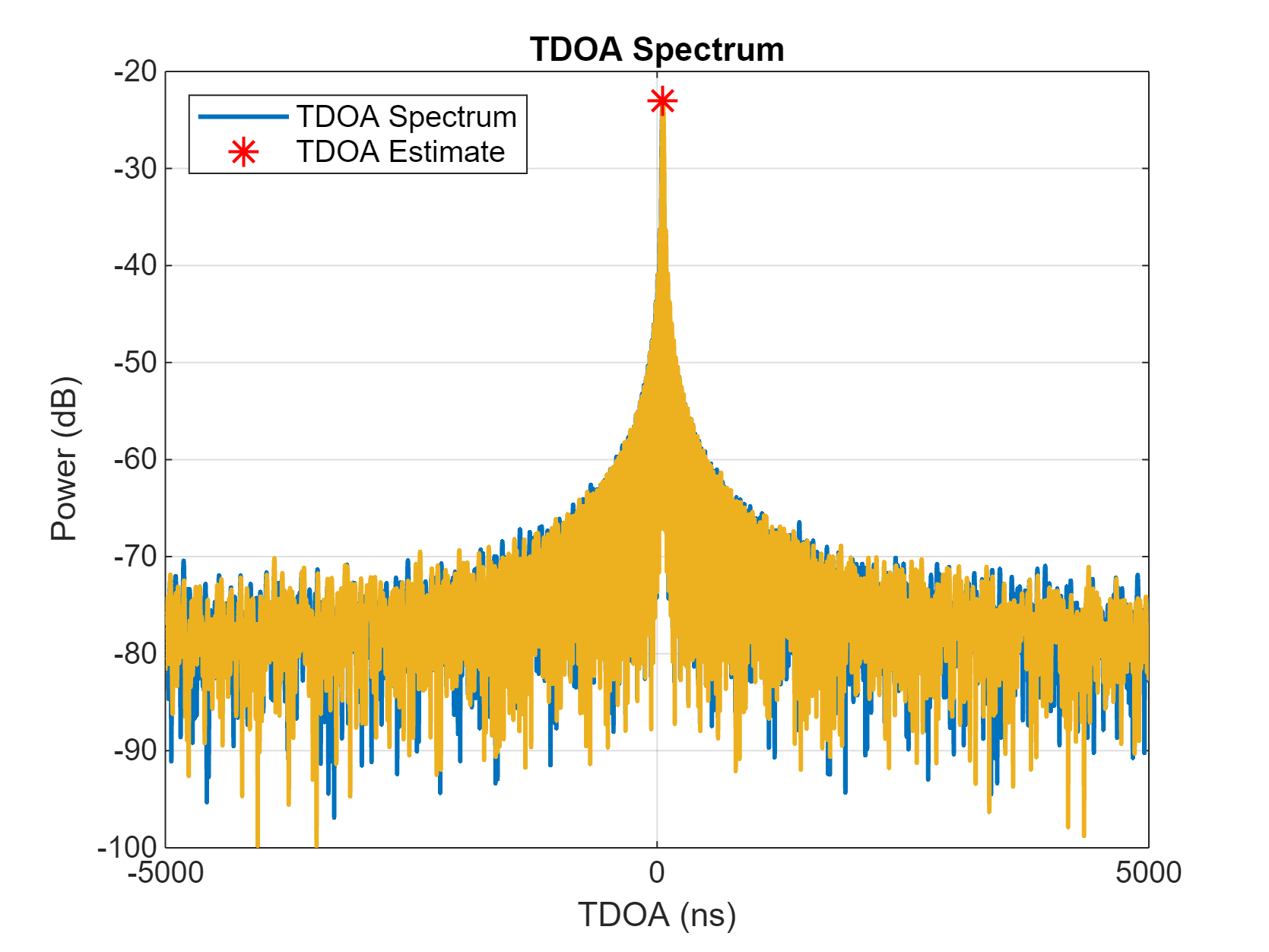plotTDOASpectrum
Syntax
Description
Create and plot the signal time-difference-of-arrival (TDOA) spectrum for anchor pair.
[
creates and plots the time-difference-of-arrival (TDOA) grid, tdoagrid,tdoaspectrum,tdoaest] = plotTDOASpectrum(estimate)tdoagrid,
the TDOA spectrum, tdoaspectrum, and the estimated TDOA,
tdoaest, for the first anchor pair derived from the phased.TDOAEstimator
System object™
estimate.
To use this function, first create and execute the phased.TDOAEstimator
System object.
[
also specifies one or more Name-Value arguments, in addition to the input arguments from the
previous syntax . For example, tdoagrid,tdoaspectrum,tdoaest] = plotTDOASpectrum(estimate,Name=Value)AnchorPairIndex=4 specifies the fourth
anchor pair in the channel (see Name-Value Arguments). You can specify multiple name-value pair arguments in any order as
Name1=Value1,...,NameN=ValueN.
Examples
Input Arguments
Name-Value Arguments
Output Arguments
Version History
Introduced in R2024b
See Also
phased.TOAEstimator | phased.TDOAEstimator | toaposest | tdoaposest | plotTOASpectrum

